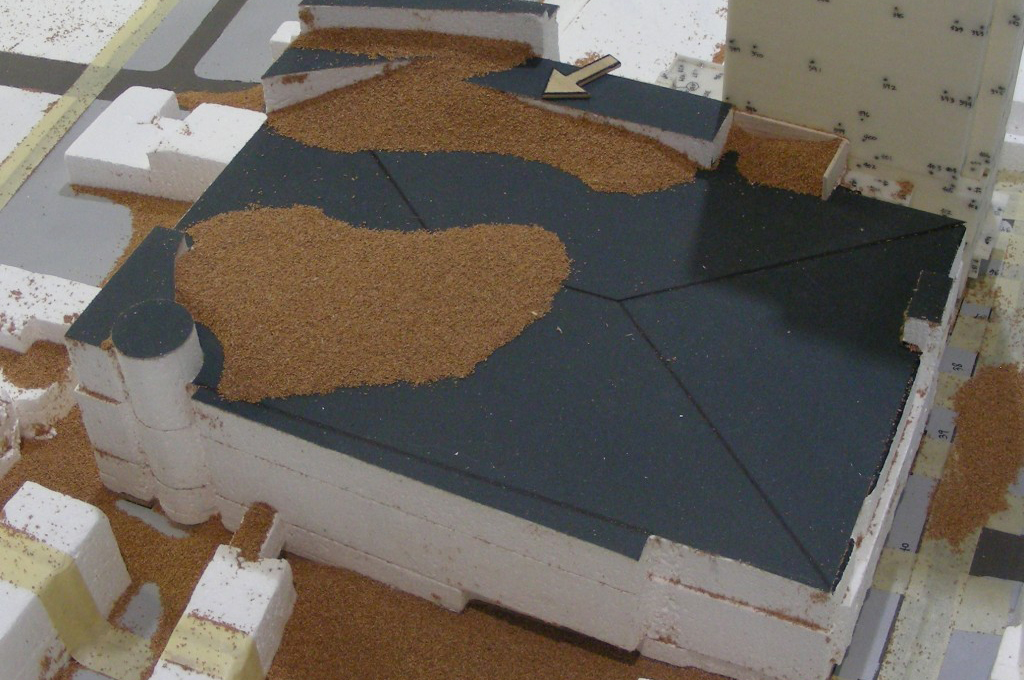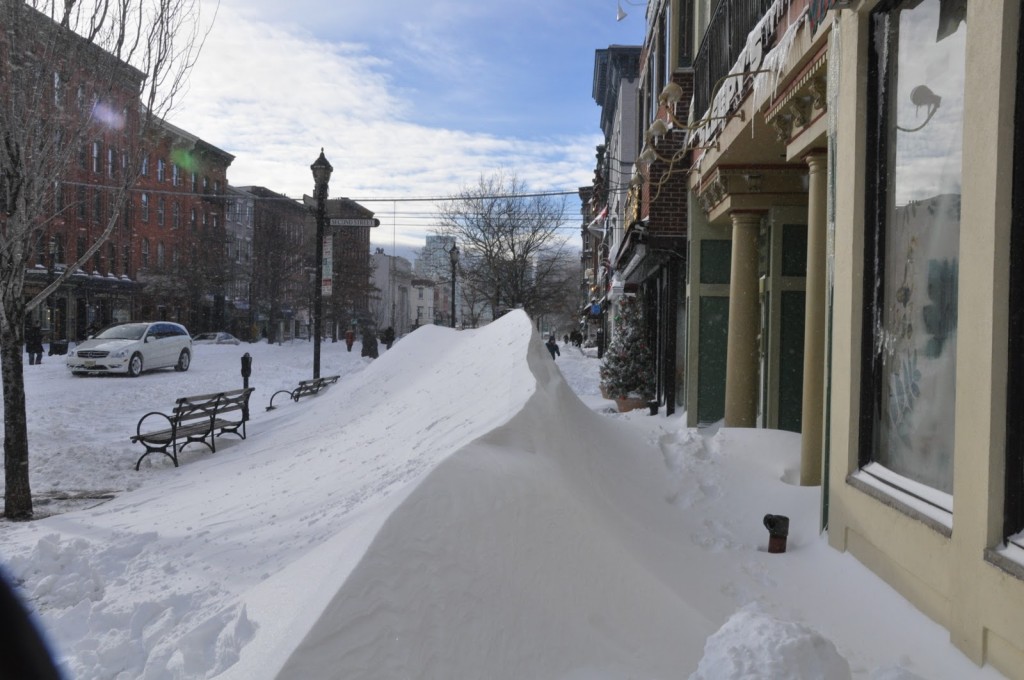Predicting snow depths for a specific outdoor location involves analyzing some of the most complicated processes in nature. Yet this process is crucial for structural design, as issues such as snow loads on roofs and canopies, icing and snow accumulation on sloped facades, sliding snow, and snow accumulation around building access points can dramatically affect a structure. At Gradient Wind, we can predict snow and ice accumulation at model scale through drift visualization and detailed snow accumulation modelling.
Snow drift visualization tests are performed using the wind-particulate analogy in a wind tunnel to simulate snow drifting patterns in full scale. This test helps us determine where drifts are likely to form for different wind directions. Based on this information, we can decide how to most effectively mitigate snow drifting effects. Due to numerous intractable environmental influences, however, this process is not effective for determining the actual snow depths and corresponding snow loads. Similar tests that involve particulates-in-air or sand-in-water are equally capable of providing this information.
Snow accumulation modelling is the most effective technique for making accurate predictions of snow depths on roofs and inclined surfaces. This process incorporates wind profile measurements over surfaces using wind tunnel or CFD models in combination with historical meteorological simulations.
This information is then analyzed through a proprietary procedure called Snow Accumulation Modelling (SAM), a computer program developed in-house at Gradient Wind. This program is capable of calculating and animating the accumulation of snow on a rooftop or any other surface on an hourly basis over an entire winter season. The outcome of this process is an accurate prediction of the snow depths that would have developed on the study roof had it existed in past years. Using meteorological data from past years, we are able to predict the statistical likelihood of future accumulations. This procedure is also capable of considering sliding snow and the icing of façade elements.
At Gradient Wind, we use these techniques for a variety of projects involving complex roofs, existing roofs influenced by adjacent taller buildings, and sloped glazing. One of the more recent applications of snow accumulation modelling has been to predict icing of glazed surfaces by freezing rain. This process also requires the modelling of heat loss across the building’s façade.


